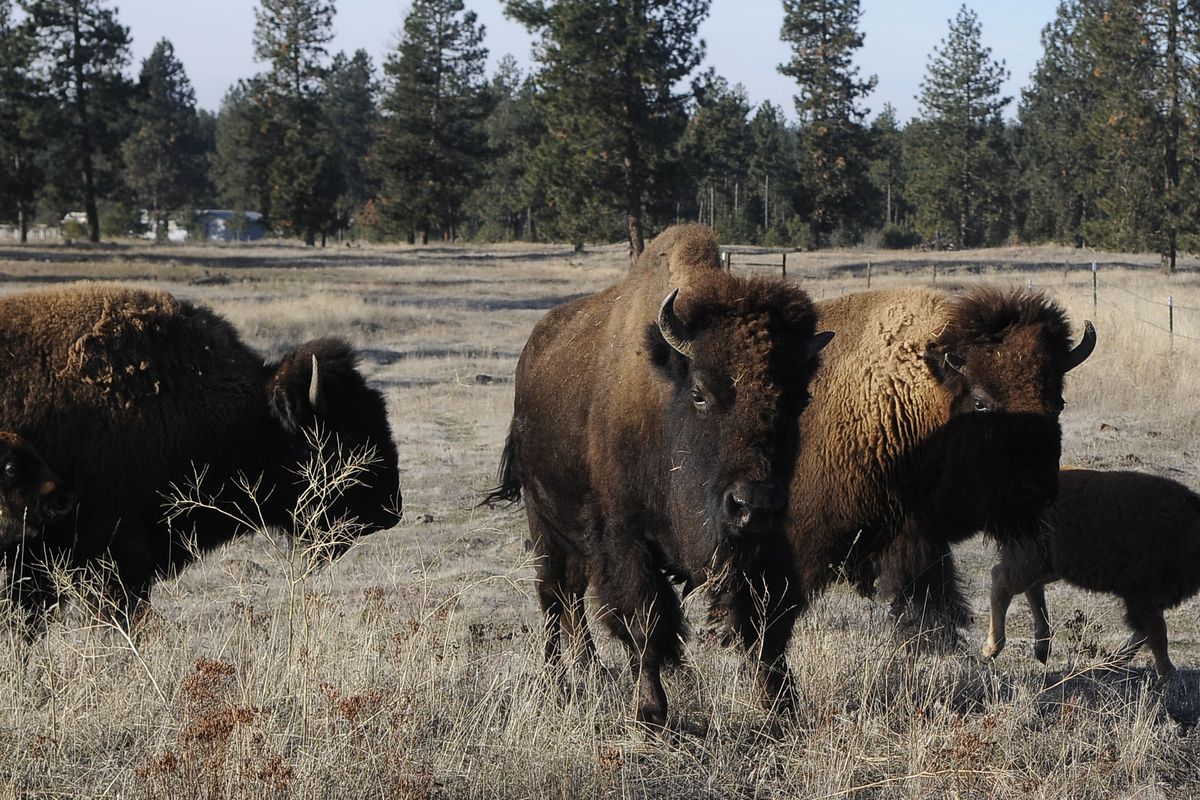Inland NW ranchers add buffalo to their herds

“Oh, give me a home where the buffalo roam,” says the traditional cowboy song. American bison, commonly known as buffalo, are making themselves at home in the Inland Northwest.
Instead of running wild, they can be found in the fenced pastures of discriminating ranchers who traditionally raised cattle.
Randy Durheim, of Four Mound Prairie Bison Ranch in Nine Mile Falls, is a genuine cowboy. “I wanted to ranch ever since I got out of school,” he said. That dream became a reality when the sawmill he was working for shut down. Durheim decided to take over the family ranch that originally belonged to his grandparents.
At the time, Durheim’s father was running 15 head of cattle, he said. Since then, Durheim has grown that herd of cattle considerably and added a herd of 35 bison to the ranch. “Bison are pretty enjoyable,” he said, “their personalities are distinct.”
Durheim runs bison on just 200 of the 2,100 acres the ranch owns or leases. “Bison require less work and fencing than cattle,” he said. “I studied up on bison for a few years before deciding that was the way to go, then I just jumped into it.”
While Durheim chose to start raising bison in 1993 due to the sudden drop of beef prices, Marland and Glenda Ray, of Mead, have been raising bison since 1976. They own a herd of 75 bison that their son tends just north of Cusick, Wash., at the Wild West Bison Ranch. The Rays chose to raise bison because they require less care, eat more roughage and don’t compact the ground like cattle do. “They are a neat animal to have around,” Marland Ray said. “You can have three bison on what two cattle will eat.”
Earlier this month, Ray attended the 11th Annual Wild West Buffalo Stampede Show and Sale in Ogden, Utah, put on by the Western Bison Association. He sold more than 100 calves. “There is good demand for breed stock,” he said. He also bought a grand champion bull for $13,000 and a bred heifer for $25,000 to improve his stock. Most bison sell for less. The average yearling costs about $1,000 to $1,500, Ray said.
Bison are also known as exceptional cutting animals. In cutting, an equestrian event, a horse and rider must separate a single animal from a herd, typically of cattle. Many cutting-horse trainers use bison calves to train their horses. “Bison are a lot faster than beef cows, cutting (turning) on their front feet,” Ray said. The Durheims often sell calves for this purpose, then buy them back after cutting season is over.
Both Durheim and Ray raise bison for their meat quality, selling half or whole animals. The Durheims sell bison meat for $2.65 a pound hanging weight, plus the buyer pays for the butchering and wrapping of the meat. Ray said that in stores, bison meat is commonly sold for about $5 a pound for burger and $20 or more for steaks in stores.
Bison meat is in constant demand because it is one of the “leanest meats without a gamey flavor,” said Maureen Durheim, Randy’s wife. “If I gave you a bison steak, you would think it was a really, really well-cooked beef steak,” she said.
According to industry officials, bison meat has less fat and cholesterol, and fewer calories than beef, pork or chicken. “Bison meat does not marble with streaks of fat like beef,” Ray said. “Bison meat has 3 percent fat versus beef having 10 to 25 percent fat. People tend to overcook it.”